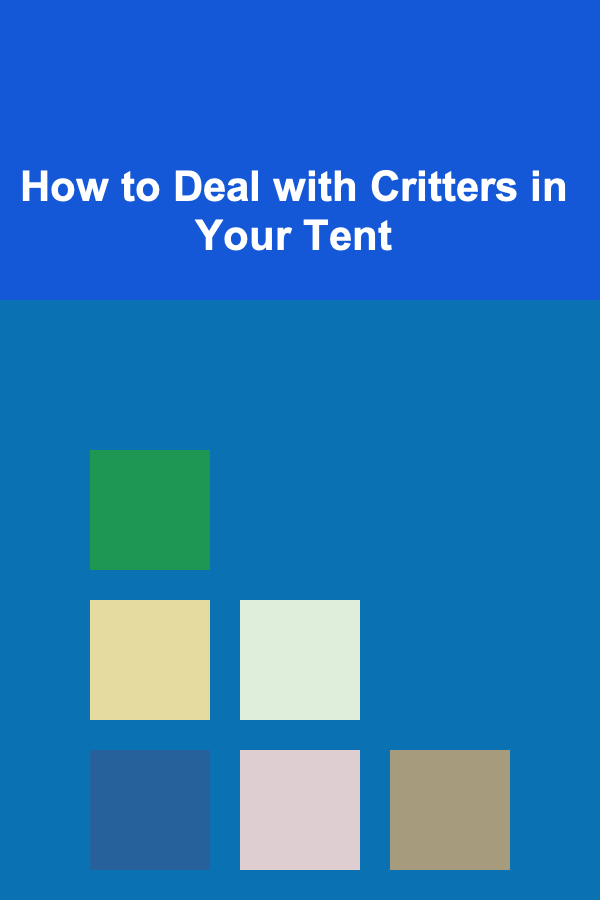
The IT Director's Guide: Leading Technology Teams and Driving Innovation
ebook include PDF & Audio bundle (Micro Guide)
$12.99$6.99
Limited Time Offer! Order within the next:

In today's fast-paced digital world, the role of an IT Director is evolving beyond mere management of infrastructure and systems. IT Directors are now expected to be visionaries and leaders, steering technology teams to deliver innovative solutions that drive business growth. Whether you are an experienced IT Director or new to the role, this guide will provide actionable insights and strategies to help you lead your teams effectively, foster innovation, and navigate the complexities of modern IT management.
Cultivating a Leadership Mindset
Effective leadership is at the heart of successful technology teams. As an IT Director, you need to strike a balance between technical expertise and leadership qualities. You must be able to inspire your team, drive collaboration, and ensure alignment with the organization's broader goals.
Key Principles for Leadership:
- Empathy and Communication: Understanding the needs and concerns of your team members is essential for fostering a collaborative environment. Ensure regular one-on-one meetings to listen to their challenges and provide guidance.
- Visionary Thinking: As an IT leader, you should have a clear vision of how technology can create competitive advantages for the business. Share this vision with your team, making sure they understand their role in achieving it.
- Adaptability: The technology landscape is constantly evolving, and as a leader, you must remain flexible and open to new ideas. Adaptation to emerging trends and technologies is a critical skill in leading a modern IT team.
Building and Leading High-Performing Technology Teams
To drive innovation, you need high-performing teams that are both motivated and skilled. Building such teams requires a strategic approach, focusing on talent acquisition, development, and retention.
Key Actions to Build High-Performing Teams:
- Recruitment Strategy: Focus not just on technical skills but also on cultural fit. Look for team members who are not only technically proficient but also aligned with the company's values and collaborative ethos.
- Skill Development: Technology evolves rapidly, so it's essential to invest in continuous learning. Offer training programs, workshops, and certifications that help your team stay ahead of technological advancements.
- Create a Supportive Environment: High-performing teams thrive in environments where they feel supported and valued. Encourage collaboration, provide the necessary tools, and recognize team achievements to maintain morale and motivation.
Building Team Dynamics:
- Foster Cross-Functional Collaboration: In today's agile environment, collaboration across departments is essential. Encourage IT to work closely with marketing, product development, and operations teams to ensure technology supports business objectives.
- Promote Diversity and Inclusion: Diverse teams bring diverse perspectives, which is crucial for fostering innovation. Ensure that your team is diverse not just in demographics but also in skill sets, experiences, and ideas.
Driving Innovation Through Technology
Innovation is the key to staying ahead in the competitive digital age. As an IT Director, it's your responsibility to guide your team towards creating new technological solutions that drive business value.
Strategies to Drive Innovation:
- Establish an Innovation Framework: Foster an environment where experimentation is encouraged. Provide your team with the resources to explore new ideas and ensure they are not penalized for failure. Failure is often a stepping stone to success.
- Leverage Emerging Technologies: Stay abreast of emerging technologies such as AI, machine learning, blockchain, and IoT. Look for opportunities where these can be integrated into your company's offerings or processes to gain a competitive edge.
- Encourage a Culture of Continuous Improvement: Innovation is not just about major breakthroughs but also incremental improvements. Encourage your team to continuously assess and enhance existing systems and processes.
Actionable Steps to Innovate:
- Organize Hackathons or Innovation Days: Set aside time for your team to work on creative, out-of-the-box projects. Hackathons can lead to breakthrough ideas and also foster teamwork.
- Implement Agile Practices: Agile methodologies promote flexibility, rapid prototyping, and iterative development. This allows teams to quickly implement and test innovative solutions without the risk of long development cycles.
- Create Partnerships and Ecosystem Alliances: Collaborating with tech startups, academic institutions, or even other companies can provide new perspectives and opportunities for innovation. Building partnerships expands your access to new technologies and expertise.
Aligning IT with Business Objectives
Technology must be aligned with business strategy to have a meaningful impact. As an IT Director, you need to ensure that your department's goals and initiatives are in sync with the broader business objectives.
Aligning Technology with Business Strategy:
- Understand Business Needs: Regularly meet with the executive team and key stakeholders to understand their business priorities. This will ensure that your IT strategy is aligned with the company's goals and objectives.
- Communicate the Value of IT: Many business leaders may not fully understand the strategic value of IT. You need to articulate how technology initiatives are helping the business grow---whether through cost savings, improved efficiency, or enabling new revenue streams.
- Set Clear Objectives and Metrics: Establish measurable outcomes for your technology projects that are tied to business goals. Whether it's improving customer satisfaction, reducing operational costs, or enhancing security, ensure that IT's contributions are measurable and transparent.
Managing IT Budgets and Resources
As the IT Director, you are often tasked with managing budgets and allocating resources effectively. Balancing innovation with cost control is a critical aspect of this role.
Key Actions for Managing IT Budgets:
- Prioritize Spending: Prioritize IT investments based on their strategic value. Not all technology projects will have the same impact, so be strategic in allocating resources to the most critical initiatives.
- Cost Optimization: Identify opportunities for cost savings without sacrificing quality. For example, cloud adoption can lead to reduced infrastructure costs, and automation can help eliminate labor-intensive tasks.
- Leverage Vendor Relationships: Establish strong relationships with key technology vendors to negotiate better deals, ensure support, and take advantage of new technologies at lower costs.
Tools for Budget Management:
- Financial Management Tools: Utilize tools like Adaptive Insights, Planful, or Microsoft Power BI for managing IT budgets, forecasting expenses, and tracking ROI on technology investments.
- Cost Optimization Frameworks: Adopt frameworks that emphasize ROI and value delivery, such as the Total Cost of Ownership (TCO) model or the Cost-Benefit Analysis (CBA) approach.
Ensuring Security and Compliance
As your organization adopts new technologies and increases its digital footprint, ensuring the security and compliance of IT systems becomes even more critical. Cyber threats are growing, and regulations are constantly evolving, making it essential to have robust security practices in place.
Security Strategies for IT Directors:
- Implement a Cybersecurity Framework: Adopt a cybersecurity framework, such as NIST or ISO/IEC 27001, to establish standardized processes and practices for protecting your organization's data and IT infrastructure.
- Zero Trust Architecture: Implement a zero-trust approach, which assumes that no one, whether inside or outside the network, should be trusted by default. This requires continuous verification and monitoring of users and devices.
- Regular Audits and Vulnerability Assessments: Regularly perform security audits and vulnerability assessments to identify and address potential weaknesses in your systems before they become security threats.
Compliance Best Practices:
- Stay Updated on Regulations: Compliance with regulations such as GDPR, HIPAA, and PCI-DSS is crucial. Keep track of changes in regulations that impact your industry and ensure that your systems are compliant.
- Employee Training: Regularly train employees on data privacy, security practices, and how to spot phishing attempts or other social engineering attacks. Human error is often the weakest link in security.
Embracing Agility and Change Management
Agility is key in today's fast-paced IT landscape. The ability to quickly adapt to new challenges and opportunities is vital for success. As an IT Director, you need to embrace agile methodologies, not only in your development processes but also in how you manage teams and projects.
Key Actions to Foster Agility:
- Adopt Agile Methodologies: Encourage your teams to adopt agile methodologies, such as Scrum or Kanban, to enable rapid iteration, flexibility, and responsiveness to change.
- Promote a Growth Mindset: Encourage your team to view challenges as opportunities for growth rather than obstacles. A growth mindset will foster innovation, adaptability, and resilience in the face of uncertainty.
Change Management Tips:
- Clear Communication: Change, especially in IT, can be difficult. Ensure clear communication about why changes are happening, how they will benefit the organization, and what the team's role is in the process.
- Iterative Change Implementation: Roll out changes in manageable phases, gathering feedback at each stage to ensure smooth transitions and adjustments.
Conclusion
Leading technology teams and driving innovation requires a blend of strong leadership, technical expertise, and strategic thinking. As an IT Director, your ability to build high-performing teams, foster a culture of innovation, align IT with business objectives, and manage security and budgets will determine the success of your organization's digital transformation. By embracing these actionable strategies, you can not only lead your teams effectively but also ensure that technology remains a key driver of business success.

Effective Strategies for Lowering Credit Card Interest Rates and Saving Money
Read More
How to Choose the Best Soundproofing Foam for Your Needs
Read More
How to Deal with Critters in Your Tent
Read More
How to Organize Your Phone Chargers and Cables
Read More
The Art of Data Science: Innovations and Applications in Modern Jobs
Read More
How to Detect and Avoid Loaded Dice
Read MoreOther Products

Effective Strategies for Lowering Credit Card Interest Rates and Saving Money
Read More
How to Choose the Best Soundproofing Foam for Your Needs
Read More
How to Deal with Critters in Your Tent
Read More
How to Organize Your Phone Chargers and Cables
Read More
The Art of Data Science: Innovations and Applications in Modern Jobs
Read More